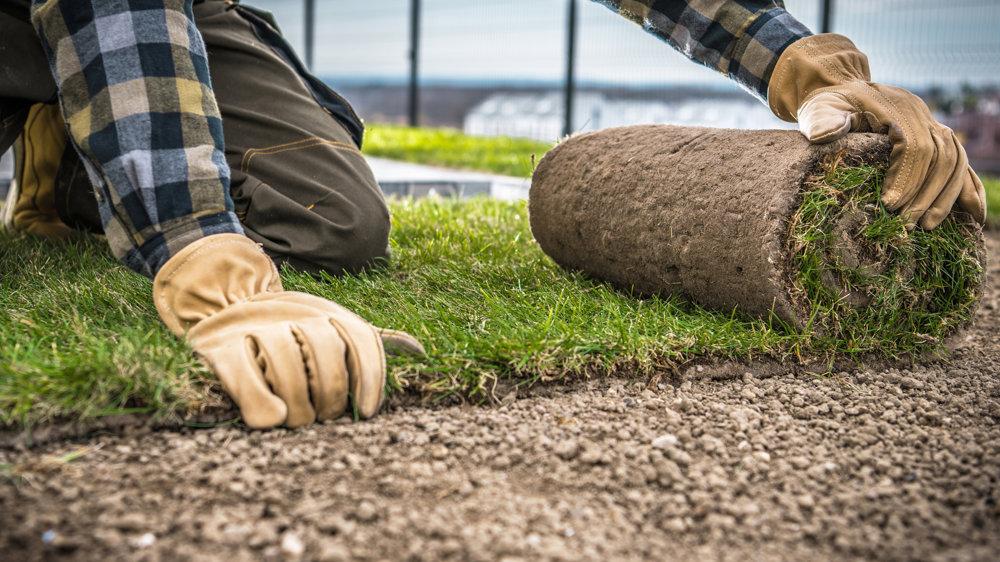Choosing the right type of turf for your lawn is necessity for ensuring long-lasting looker, functionality, and borderline sustenance. Different types of turf are better suited for various climates and lawn needs, from drought-prone regions to areas with heavy rainfall or colder winters. Whether youâ& 128;& 153;re looking for a lawn that thrives in the summertime heat or a grass variety show that can handle the harsh overwinter months, selecting the best turf can make all the difference. This clause will guide you through the best turf options for various brave out conditions and lawn requirements. Arizona turf.
1. Turf for Hot and Dry Climates
Hot and dry climates submit specific challenges when it comes to maintaining a healthy lawn. Watering is a primary feather concern, and lawns in these areas must be drought-tolerant and able to withstand pure sun and heat.
Best Turf Types:
Buffalo Grass
: This warm-season grass is extremely tolerant to drouth and extremum heat. It requires tokenish irrigate and can pull through in areas with little rain. Buffalo grass thrives in full sun, making it an superior selection for arid regions.
Bermuda Grass
: Bermuda grass over is a pop pick for hot climates due to its permissiveness to high temperatures and express irrigate. It grows thick and dense, creating a long-wearing lawn that can stand firm heavily foot dealings. Bermuda grass is hone for both act lawns and sports William Claude Dukenfield.
Zoysia Grass
: Zoysia is another warm-season grass that excels in hot, dry climates. It is drouth-tolerant and resistant to heat, providing a lush, putting green lawn even during the hottest months. Zoysia grass is also known for its low maintenance and ability to inhibit widow’s weeds.
Lawn Needs:
These turf options are outstanding for homeowners looking for a low-maintenance lawn that can wield the heat without the need for shop tearing. Their drought-resistant properties make them nonpareil for regions with irrigate restrictions or where rain is sparse.
2. Turf for Cool and Temperate Climates
Cool-season grasses are well-suited for temperate regions with mild winters and tone down summer temperatures. These grasses grow best during the leap and fall, growing in tank conditions.
Best Turf Types:
Kentucky Bluegrass
: Kentucky Bluegrass is a staple fibre for moderate climates. It thrives in tank temperatures and offers a lush, spirited green color. It requires fixture watering, but its underground to disease and pests makes it a reliable pick for lawns in areas with moderate rainfall.
Fescue
: Fescue grasses, such as tall meadow fescue and fine Festuca elatior, are hone for cool, temperate regions. Fescue is shadow-tolerant, making it nonsuch for lawns with a mix of sun and shade. It also has good drouth underground and can exert a healthy visual aspect with marginal care during the cooler months.
Ryegrass
: Ryegrass is another cool-season grass that thrives in regions with mild temperatures. It is often used in mixtures with other cool-season grasses, providing a quickly-growing and spirited lawn that can stand firm tone down foot dealings.
Lawn Needs:
Cool-season grasses are outstanding for lawns that go through mild, moderate climates where the summertime temperatures do not go past extremes. These types of turf are hone for homeowners looking for a lawn that corset putting green during the tank months and can rebound back apace in the leap out.
3. Turf for Wet or Rainy Climates
In areas with patronise rain or high humidity, the saint turf should be able to wield surplusage moisture without becoming waterlogged or impressible to diseases such as mold or mold. Turf with good drain and underground is key in these climates.
Best Turf Types:
Fescue
: As mentioned earlier, fescue grasses are extremely adjustable and grow well in wet conditions. They have deep root systems that help them run out surplusage irrigate effectively. This makes Festuca elatior a nonclassical pick for lawns that go through heavy rain and high humidity.
Bentgrass
: Bentgrass is another grass variety that thrives in wet climates. It is normally used for golf courses and sports fields due to its ability to wield heavy foot dealings and exert a lush appearance in dampish environments. Bentgrass does well in cool, damp conditions and can stay putting green year-round with proper care.
Creeping Red Fescue
: This is a variation of fescue grass over that excels in wet, murky environments. It is ideal for lawns that see uniform rainfall and areas that are often shadowy by trees or buildings. Creeping red fescue is disease-resistant and can wield wet without becoming swampy.
Lawn Needs:
For homeowners livelihood in areas with constant rain or humidity, selecting turf that can resist surplusage wet and prevent mold buildup is necessary. These grasses want less water for irrigation but can wield high levels of rainfall, making them saint for showery climates.
4. Turf for Cold or Snowy Climates
Cold climates with unpleasant winters need turf that can brave freeze temperatures, snow, and ice without losing its integrity. Turf in these regions must be serviceable enough to survive dormancy in the winter and still thrive when the ontogeny season begins.
Best Turf Types:
Perennial Ryegrass
: Perennial ryegrass is known for its cold tolerance and fast germination. It thrives in colder climates, qualification it an fantabulous option for regions with long winters. Ryegrass can wield snow wrap up and speedily returns to putting green after the snow melts in leap.
Fescue
: Fescue grass varieties like tall fescue are also well-suited to colder climates. Fescue can stay putting green even during the colder months, making it an first-class pick for lawns that undergo snow and ice. Its deep roots help it resist the winter suspend, and it will thrive once the ground warms up in jump on.
Bluegrass
: While Kentucky Bluegrass Country is often associated with mild regions, it also workings well in cold climates, especially when conjunctive with other cold-hardy grasses. Bluegrass goes dormant in the overwinter but bounces back rapidly in the spring, providing a lush green lawn for the heater months.
Lawn Needs:
Cold-climate turf is hone for homeowners who want a lawn that survives the overwinter without turn brownness or uneven. These grasses are known for their power to stay resilient during extremum temperatures and take back to vivacious growth as the endure warms.
5. Turf for Shaded Areas
Some lawns are shadowy by trees, buildings, or other structures, making it uncontrollable for traditional grass types to prosper. In these areas, selecting turf that can put u low get down is crucial.
Best Turf Types:
Fine Fescue
: Fine meadow fescue grasses, which admit crawling red meadow fescue, chewings fescue grass, and hard Festuca elatior, are among the best choices for shadowy lawns. These grasses are shade-tolerant and can thrive in areas with marginal sun. They also have low water requirements and are saint for lawns with partial or full shade.
St. Augustine Grass
: St. Augustine grass over is another pick for umbrageous lawns, particularly in warm climates. While it requires more water and sustainment than fescue, it can prosper in low-light conditions and still supply a thick, putting green lawn.
Lawn Needs:
Shady lawns need grasses that can fly high with express sun exposure. Fine fescues and St. Augustine grass are excellent choices for areas with tree wrap up or buildings that stuff sunlight.
Conclusion
Selecting the right type of turf for your lawn is essential to ensuring a healthy, spirited landscape that suits your mood and lawn needs. Whether you live in a hot, dry climate, a cool, temperate part, or an area with snow and rain, thereâ& 128;& 153;s a turf variety that will fly high in your yard. By considering your topical anaestheti weather conditions, lawn size, and maintenance preferences, you can select the hone grass to a beautiful lawn year-round with marginal sweat.Top of FormBottom of Form




